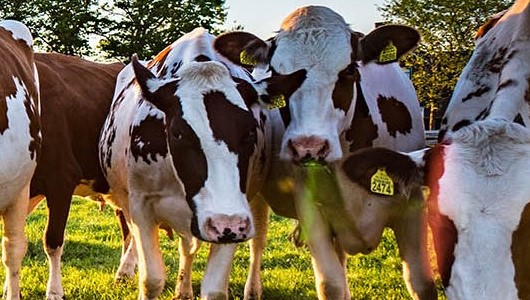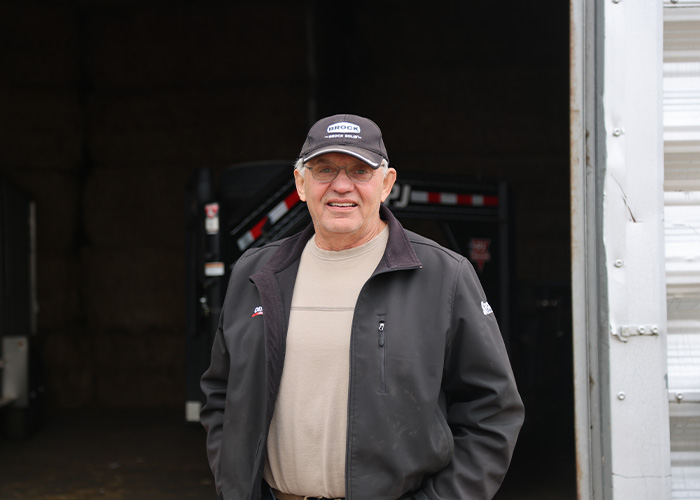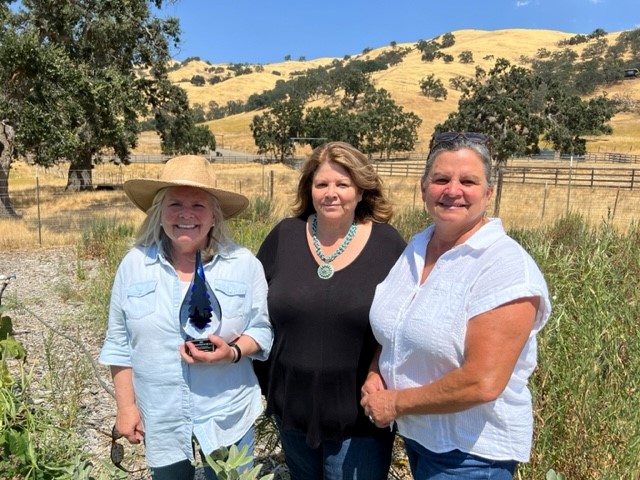Does your operation include livestock? USDA offers a variety of programs and services that support your operation. Whether you raise cattle, poultry, pork, goats, sheep, farm-raised fish or honeybees, we have options for you.
Loans
USDA may be able to help you access capital. And we can be a good partner if you aren’t able to get funding from a traditional lender.
Farm Loans
We offer loans directly through USDA and also guarantee loans through other lenders.
Loans available directly through USDA range from $50,000 microloans to a maximum of $400,000 for operating loans and up to $600,000 for ownership loans.
Alternatively, you can apply for a guaranteed loan through USDA-approved banks and other commercial lenders. The maximum loan amount for a Guaranteed Farm Operating Loan is adjusted annually each Fiscal Year based on inflation.
Underlined Header
Ownership Loans
Ownership loans are available to help you purchase land and equipment.
Loan Amounts
- Microloan: $50,000 or less
- Direct loan: $50,001 - $600,000
- Guaranteed loan: $600,000 + (the maximum loan amount is adjusted annually each Fiscal Year based on inflation).
Underlined Header
Operating Loans
Operating loans help you meet day-to-day costs.
Loan Amounts
- Microloan: $50,000 or less
- Direct loan: $50,001 - $400,000
- Guaranteed loan: $400,000 + (the maximum loan amount is adjusted annually each Fiscal Year based on inflation).
Underlined Header
Combined Ownership & Operating Loans
Combined ownership & operating loans help purchase land and equipment and meet day-to-day costs.
Loan Amounts
- Microloan: $100,000 or less
- Direct ownership & operating loan: $100,001 - $1M
- Guaranteed loan: $1M + (the maximum loan amount is adjusted annually each Fiscal Year based on inflation).
Microloans are a great option for livestock producers. They can help you make a down payment on land, expand your herd, purchase needed farm equipment, and more.
More information on these loans can be found in our Farm Loan Assistance Tool.
Other Loans
USDA also offers:
- Farm Storage Facility Loans (FSFL): Funds are used to build or upgrade on-farm storage facilities and to purchase handling equipment.
- Marketing Assistance Loans (MAL): Funds are used to provide interim financing to producers so eligible commodities, such as wool and honey, can be stored and sold when market conditions are better.
To get help, contact the Farm Service Agency (FSA) at your local USDA Service Center.
Risk Protection
Depending on where you raise livestock, natural disasters like drought or blizzards may impact your operation. USDA provides risk protection by offering crop insurance and the Noninsured Crop Disaster Assistance Program (NAP). With Federal Crop Insurance, you can protect your livestock with plans such as Livestock Gross Margin (LGM) and Livestock Risk Protection (LRP). Additionally, you can cover your grain and forage crops through NAP.
To explore crop insurance, contact an Approved Insurance Provider.
Dairy Coverage
If you operate a dairy farm, the Dairy Margin Coverage (DMC) program offers protection to dairy producers when the difference between the all-milk price and the average feed price falls below a certain dollar amount selected by the producer. You can further protect your bottom line with the Dairy Revenue Protection (Dairy-RP) insurance plan.
Disaster Assistance Programs
If disaster strikes, we offer other disaster assistance programs to offset losses and get you back on your feet.
For livestock operations, some relevant programs include:
- Emergency Assistance for Livestock, Honey Bees, and Farm-Raised Fish (ELAP) offers financial assistance to eligible livestock producers for losses due to adverse weather events.
- Livestock Indemnity Program (LIP) provides benefits for livestock who suffered injury or death due to an adverse event.
- Livestock Forage Disaster Program (LFP) provides compensation to producers who suffered grazing losses due to drought or fire (only on federally managed land).
Emergency loans provide up-front funding to support recovery, and the Emergency Conservation Program (ECP) covers costs of restoring conservation practices and can also provide assistance for fence replacement and repair following a qualifying disaster event. If you’re enrolled in the Conservation Reserve Program (CRP), CRP Haying and Grazing may also become available under certain conditions to provide emergency relief to livestock producers.
For other disaster programs, contact the Farm Service Agency (FSA) at your local USDA Service Center or use the Disaster Assistance Discovery Tool.
Conservation
We can help you plan and implement conservation practices to benefit both natural resources and your bottom line.
Planning
The Natural Resources Conservation Service (NRCS) will work with you to discuss your goals and develop a conservation plan for your operation. If you want to get started at home, you can also use our Conservation Concerns Tool to explore the different types of conservation issues that could impact the natural resources and productivity of your operation and conservation practices that might be right for you.
Common Conservation Activities
NRCS can share the cost with farmers and ranchers to implement conservation activities through the Environmental Quality Incentives Program (EQIP) and Conservation Stewardship Program (CSP).
Common conservation activities for livestock producers include:
- Prescribed Grazing: managing the harvest of vegetation with grazing animals.
- Nutrient Management: managing the use of nutrients to reduce environmental impacts.
- Livestock Pipeline: conveying water for livestock or wildlife.
Easements
If certain parts of your farm are not ideal for cultivation, conservation easements or longer-term conservation options may be right for you.
To learn more about conservation, contact the Natural Resources Conservation Service (NRCS) or Farm Service Agency (FSA) at your local USDA Service Center.
Fair Competition
The U.S. Departments of Agriculture (USDA) and Justice (DOJ) launched an online tool, located at FarmerFairness.gov, which allows farmers and ranchers to anonymously report anticompetitive practices in the livestock and poultry sectors. Through each respective mission and legal authority, USDA and DOJ are committed to working together to ensure fair and competitive livestock and poultry markets and reviewing and addressing concerns, complaints, and tips received through this website, as well as other established processes.
Find Your Local Service Center
USDA Service Centers are locations where you can connect with Farm Service Agency, Natural Resources Conservation Service, or Rural Development employees for your business needs. Enter your state and county below to find your local service center and agency offices. If this locator does not work in your browser, please visit offices.usda.gov.
Learn more about our Urban Service Centers.
Visit the Risk Management Agency website to find a regional or compliance office or to find an insurance agent near you.




